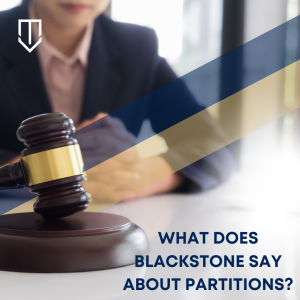 What is an Ouster (Civ. Code § 843)?
What is an Ouster (Civ. Code § 843)?
An ouster occurs when one tenant wrongful dispossesses or excludes another cotenant or cotenants from the common property. (Zaslow v. Kroenert (1946) 29 Cal.2d 541, 548.) Regardless of whether individuals share property as joint tenants or tenants in common, the property rights of cotenants are usually the same regarding possession. (12 Witkin, Summary 11th Real Prop § 41 (2023).) Each cotenant is entitled to share possession of the entire property and cannot be excluded from any part of the property by the other cotenant. (Id.)
 California Partition Law Blog
California Partition Law Blog


 Generally, every owner of property is liable for injuries on their property when it is not in a reasonably safe condition. (Cody F. v. Falletti (2001) 92 Cal.App.4th 1232.) If a party was a
Generally, every owner of property is liable for injuries on their property when it is not in a reasonably safe condition. (Cody F. v. Falletti (2001) 92 Cal.App.4th 1232.) If a party was a  Sir William Blackstone is a titan in the field of legal jurisprudence. His 1765 work, Commentaries on the Laws of England, is his most famous legal treatise, forming the backbone of common law analysis as modern lawyers understand it today. Without his efforts centuries ago, our conceptions of property, individual rights, and governmental authority would not be the same. His works remain cited even now in judicial decisions at all levels, including the Supreme Court of the United States.
Sir William Blackstone is a titan in the field of legal jurisprudence. His 1765 work, Commentaries on the Laws of England, is his most famous legal treatise, forming the backbone of common law analysis as modern lawyers understand it today. Without his efforts centuries ago, our conceptions of property, individual rights, and governmental authority would not be the same. His works remain cited even now in judicial decisions at all levels, including the Supreme Court of the United States.